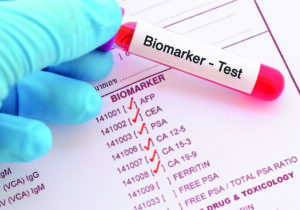What is Multiple Autoimmune Syndrome?
3 min read
Multiple autoimmune syndrome is a medical condition where affected individuals are diagnosed with at least three autoimmune disorders at the same time. An autoimmune condition is one where the immune system of the body produces proteins known as antibodies that attack and cause inflammatory processes that result in damage to normal cells, tissues, and organs.
Patients diagnosed with an autoimmune condition already have a 25 percent risk of developing a second autoimmune disorder. The risk is relatively high then that one could develop a thirdor even fourth such disease. Being diagnosed with five autoimmune conditions is considered to be an extremely rare occurrence though.
Patients diagnosed with multiple autoimmune syndrome tend to develop at least one autoimmune skin condition which is commonly either alopecia areata or vitiligo.
In the general population, studies have shown that autoimmune thyroiditis and rheumatoid arthritis are amongst the most common autoimmune conditions to develop and in patients who have either one of these conditions, there is a nearly doubled chance of developing the other one as opposed to those who don’t have either autoimmune disorder.
There also seems to be an inverse relationship between rheumatoid arthritis and multiple sclerosis where patients who have either one of these conditions, the risk of developing the other one is decreased.
Classification of multiple autoimmune syndrome
The classification of multiple autoimmune syndrome is grouped into three divisions depending on the groups of conditions that occur together in patients. This classification is especially useful in patients with two autoimmune conditions as it can be used to predict what the possible third, or even fourth, condition may be.
The classification is as follows1:
· Type 1 – myasthenia gravis, polymyositis, thymoma, giant cell myocarditis.
· Type 2 – rheumatoid arthritis, Sjogren’s syndrome, primary biliary cirrhosis, autoimmune thyroid disease, scleroderma.
· Type 3 –myasthenia gravis and/or thymoma, autoimmune thyroid disease, vitiligo, type 1 diabetes, Sjogren’s syndrome, dermatitis herpetiformis, pernicious anemia, Addison’s disease, systemic lupus erythematosus, idiopathic thrombocytopenic purpura, autoimmune hemolytic anemia.
Causes
The reason why and the mechanism of how multiple autoimmune syndrome develops is not known but researchers and healthcare professionals theorizethe following possibilities:
· There is a genetic predisposition to develop autoimmune conditions.
· Certain environmental triggers may be involved with the development of the syndrome.
· Multiple organ systems may also be involved in the presence of certain antibodies. This means that antibodies causing one autoimmune disorder may very well cause another.
· The introduction of immunomodulatory medications to treat one autoimmune condition may end up altering the immune system which may result in the development of another autoimmune disorder.
The immunogenetic theory has been mentioned since conditions associated with multiple autoimmune syndrome seem to occur in the same person or within members of the same family. In one meta-analysis review2, it was demonstrated that multiple gene signals were shared amongst 10 childhood autoimmune diseases and these genes played an important role on influencing how the immune system of an individual reacted to these conditions.
The conditions that were noted in the study wereCrohn’s disease, type 1 diabetes, psoriasis, celiac disease, ulcerative colitis, juvenile idiopathic arthritis, systemic lupus erythematosus, ankylosing spondylitis, common variable immunodeficiency syndrome, and autoimmune thyroiditis.
Multiple rheumatological autoimmune conditions
The presence of two or more autoimmune conditions affecting the rheumatological system is also not an uncommon occurrence. Multiple autoimmune syndrome may include co-occurrence of any of the following autoimmune conditions:
· Rheumatoid arthritis
· Polymyositis
· Systemic lupus erythematosus
· Vasculitis
· Sjogren’s syndrome
· Scleroderma
Gender-based influences
Autoimmune conditions are more prevalent in women than they are in men. This fact seems to complicate matters for researchers who try to determine the risk for the development of a second or third autoimmune condition because the question that arises is whether this means that the risk differs amongst the genders or not.
References
1. COJOCARU M, COJOCARU IM, SILOSI I. Multiple autoimmune syndrome. Mædica. 2010;5(2):132-134.
2. Li YR, et al. Meta-analysis of shared genetic architecture across ten pediatric autoimmune diseases.Nature Medicine.2015 Sep;21(9):1018-27. doi: 10.1038/nm.3933. Epub 2015 Aug 24.






